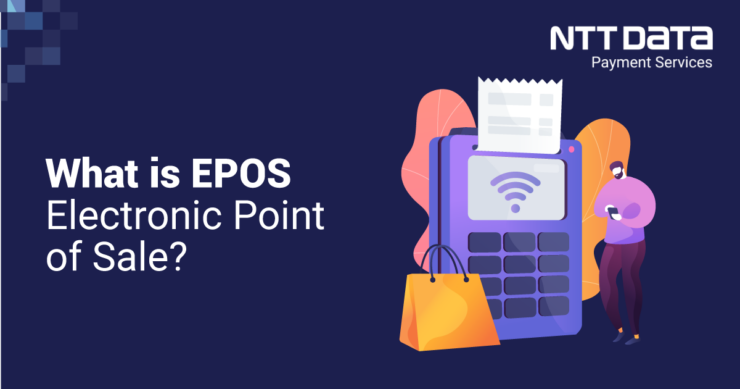
Table of Contents
An EPOS or Electronic Point of Sale system is a digital checkout and payment solution used widely in retail stores today. In this blog post, we will take a deep look into the inner workings of EPOS technology.
What is an EPOS?
An EPOS (Electronic Point of Sale) is a computerised system used by retailers and merchants to process customer transactions, facilitate payments, and manage inventory in real-time.
The integration of various hardware components enhances speed, accuracy and the overall shopping experience.
Understanding Electronic Point of Sale Systems
An EPOS system replaces the traditional cash register with a computerised system.
A typical EPOS system includes:
- A cash register terminal
- A barcode scanner
- A customer display screen
- A receipt printer
- A payment terminal for accepting various forms of payment like credit and debit cards.
Recent Web Stories
The cash register terminal is the main control unit where sales are logged and receipts are printed. The barcode scanner allows items to be quickly scanned, while the customer display lets customers see the running total as items are added to the sale.
Behind the scenes, when an item is scanned at checkout, the EPOS system automatically looks up the product details like the name, price and stock levels from the store’s database in real-time.
It then adds the item to the open sale and updates the overall total. Payments are processed directly within the software before a receipt can be printed.
With integrated inventory management, EPOS also makes it easier for retailers to keep track of stock levels in real-time. When items are sold, they are automatically deducted from existing quantities.
Likewise, receipts from purchases can be used to replenish stock. This level of visibility helps minimise out-of-stock situations.
EPOS systems also generate detailed sales reports that offer insights into best-selling products and peak shopping periods. Such analytics help optimise operations and purchasing decisions.
| Did you know? Advanced EPOS solutions integrate additional functionalities like omni-channel capabilities. For example, retailers can offer “buy online, pickup in-store” options. This provides an end-to-end seamless shopping experience. |
Benefits of Using EPOS
Here are 10 key benefits of using EPOS systems.
- Increased checkout speed – Automated processes like barcode scanning and payment reduce errors and speed up transactions.
- Improved inventory management – Real-time tracking of stock levels and automated replenishment avoid out-of-stock situations.
- Enhanced reporting and analytics – Detailed sales reports provide insights into best sellers and customer purchasing patterns.
- Reduced errors – Manual errors from tasks like price lookups and data entry are minimised through automation.
- Convenient payment options – EPOS supports multiple payment modes like cards, digital wallets and self-checkout for seamless experiences.
- Loyalty program integration – Customers can easily enrol and redeem points for discounts via EPOS during checkout.
- Omnichannel capabilities – Features like buying online and picking up in-store offer end-to-end digital shopping journeys.
- Remote management – Cloud-based EPOS allows systems to be managed from any location via Internet connectivity.
- Customisable interfaces – Flexible interfaces on EPOS screens can be tailored to specific business needs.
- Mobile EPOS – Tablets can be used as portable POS devices for scenarios like pop-ups and events, extending flexibility.
Get the best EPOS with NTT DATA Payment Services.
As an industrial leader in digital payments processing solutions, NTT DATA Payment Services understands the power of EPOS technology for retailers. From faster checkouts to unified commerce, NTT DATA Payment Services helps merchants improve their customer experience and drive growth.
NTT DATA Payment Services offers a complete payment solution to advance both your offline and online businesses from,
- Payment Gateway in India
- POS machines
- IVR payments
- Mobile applications, and
- Bharat QR Scan and Pay
We ensure maximum comfort, convenience, and safety for all your payments.
EPOS: Streamlining Retail from Checkout to Analytics
The speed, accuracy and convenience of EPOS systems afford benefits to retailers and customers. As EPOS technologies continue to improve with new features such as mobile and cloud capabilities, the opportunities to enhance the shopping experience will also grow.
Whether it’s faster checkout lines, personalised offers or buy-online options, retailers can expect EPOS solutions to get even smarter in the coming years.
| Also, you can get frequent updates on nttdatapayments Instagram page. |
Electronic Point of Sale: FAQs
1. What is an EPOS system?
An EPOS or Electronic Point of Sale system is a digital checkout and payment solution used in retail stores to automate tasks like processing sales, payments and inventory management.
2. How does an EPOS system work?
An EPOS system includes hardware items like barcode scanners, displays and payment terminals. Its software logs sales looks up product details, calculates totals, processes payments and generates invoices.
3. What are the benefits of EPOS for retailers?
EPOS systems provide benefits like faster checkout speeds, reduced errors, better inventory visibility and detailed sales analytics, which help optimise operations.
4. How do EPOS systems enhance customer experience?
Features like loyalty programs, contactless payments and omni-channel integration offer seamless shopping. Customers enjoy shorter queues, redemption offers, and flexibility of options like buying online and picking up in-store.
5. What are the latest trends in EPOS technology?
Advanced EPOS solutions now offer remote management, customisable screens, cloud-hosting, mobile capabilities, APIs for integration and business analytics for actionable insights.







